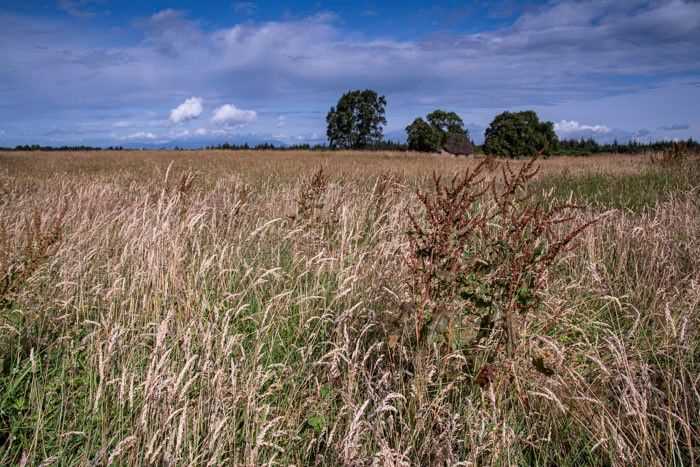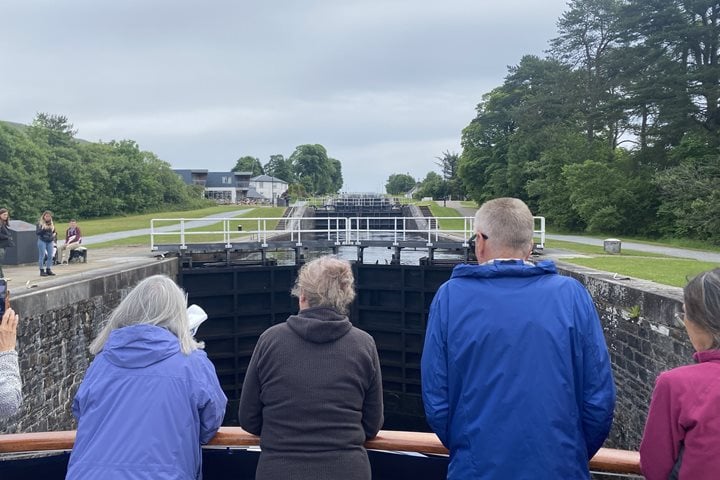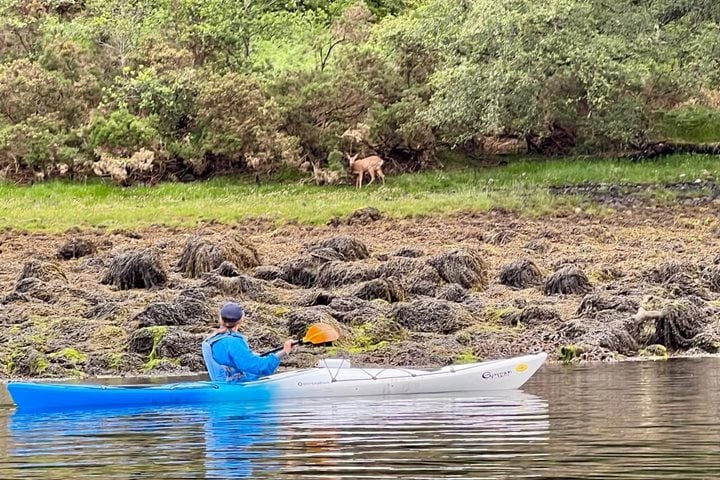Our first day on board Lord of the Glens started with a beautiful, sunny morning in Muirton overlooking the city of Inverness, shimmering below us as we lay quietly in the canal. Our destination was the famous battlefield of Culloden, where on April 16, 1746, the rebel Jacobite army under Bonnie Prince Charlie met a well-prepared government army commanded by the Duke of Cumberland. The consequences of their defeat on that field reverberated through the Highlands for many years to come, leading to suppression of the culture, population clearances, and emigration to the new world.
Today the battlefield is bright with wildflowers and visitors from around the world. An innovative museum tells the story of these fateful events, and there are even demonstrations of how to wear the traditional kilt. Not far from Culloden is a beautiful glen by the river Nairn where a complex of ritual monuments was erected almost 4,000 years ago. At Clava Cairns, two aligned passage graves with long tunnel entrances surrounded by standing stone circles are coordinated with the midwinter solstice, with an adjacent ring cairn and other antiquities.
Back on board, we began our transit of the Caledonian Canal, sailing in stately fashion along tranquil waters until we reached the legendary Loch Ness. The canal, itself a historical monument, was built between 1803 and 1822 under the presiding genius of engineer Thomas Telford. Running the 63-mile length of the Great Glen, a natural fault line, the canal connects the North Sea with the Atlantic coast. Loch Ness occupies 23 miles of this route, and halfway along are the spectacular ruins of Urquhart Castle, which sits on a rock overlooking the deep waters of the loch.
Soon we arrived at Fort Augustus, a charming village straddling either side of the canal, and we began to ascend the set of five locks to our overnight berth at the top. Some of us enjoyed a historic and photographic walk around the village. Others went for a longer hike, taking them along the tow path, on deep country lanes to an ancient graveyard graced with yew trees, over a rushing river, among native temperate woodland of oak and hazel, and back again to the village through a field of Cheviot sheep to the former Benedictine abbey on the shores of Loch Ness.









